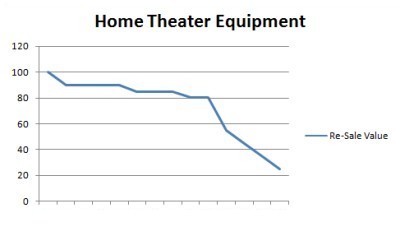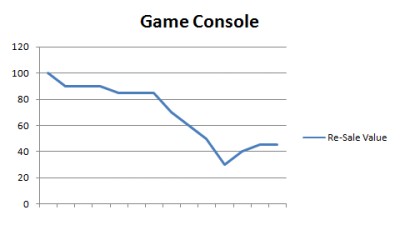Technology can appear daunting. It seems like every time you buy something, it promptly becomes worthless. I used to sell computers to people (during college) and they’d often complain that what they bought would be obsolete in months anyway.
And sometimes that’s true. I have two friends who bought plasma TVs, while we went LCD. In retrospect, ours was a smarter purchase, since plasma is now a dead technology (and an expensive on the old power bill to boot) but at the time, they probably made the best decision they could. That we bought our TV a little later than them meant that we had more information and more options available to us.
However, its not always the case that staying on top of technology needs to be a money pit. Although you’ll never make money (directly) through purchasing electronics, you can sustain a fairly constant level of new technology adoption without going into debt — if you’re smart about buying and then selling your gear.
That “selling” part is important, and timing is crucial. Craiglist, Kijiji and eBay are your friends. And knowing when your kit is approaching the drop-off point in its value curve is important. Here’s a couple (completely unscientific, observation-based) charts I put together while I was pondering this…

Home theater equipment, like TVs, receivers and DVD players have an initial fall-off in value after their release, and then tend to hold that revised value for quite a while, gradually sliding down until the technology is obsoleted — at which point their value plummets.
The best time to buy is after the initial price has dropped a little — don’t buy anything the day its released. After that you can safely hold on to it and use it for quite awhile before its time to unload and upgrade.

Game Consoles behave on the market similar to other home theater devices, with a few exceptions. One is that their value will plummet every 4-5 years when the next greatest gaming device ships (or is rumored to be near-shipping.) The other is the collectibility rebound where the device becomes “retro” (the geek equivalent of “antique”) and it becomes cool to own it regardless of age.

Apple’s computers and other devices hold their initial value for a long time, and only once in their existence come close to being worthless. They also have a collectibility rebound which brings their value back up quite high and tends to maintain it there forever. If you have a Mac that’s older than 10 years old, hold on to it, you’ll becoming out of that valley soon. If you have a Mac that’s 3-4 years old, you can probably still sell it today for almost enough money to get a brand new machine.

Windows-based computers have the simplest chart of all. Their value begins declining the day you bring it home, and continues to do so until you find yourself using it to prop open the garage door. Selling your PC will never, ever be worth your trouble.
As I said earlier, this is not “buy low, sell high” — its not the stock market, and you’re unlikely to ever make money by buying a new TV. But if you follow the curves carefully — buying below the initial peak, and selling before the value drops off — you can probably keep your tech at the same relative point, with only a minor infusion of cash at each upgrade opportunity.
The first Mac I bought for myself was $1800 — 10 years ago. I suspect that when I bought our Mac Mini for $600 8 years later (after easily a dozen computers in-between), I was still rolling over some of that initial investment.
For example: Had I behaved like a typical consumer, and kept each Mac until it was worthless, then bought a new one, I would have bought another computer roughly every 3-4 years. If the first machine was $1800, the second was $1200, and the third was $600, I would have spent $3600 in a 10-year period.
If, however, I’d sold each Mac before their drop-off point, at say 2 years, then invested $200 on top of that money in a new machine, I’d have only spent only $1800 in a 10-year period.



